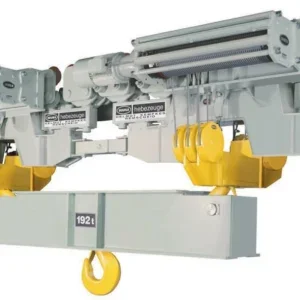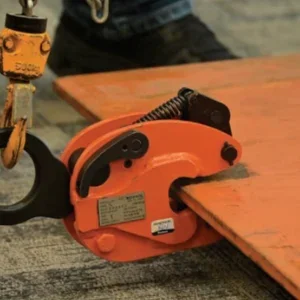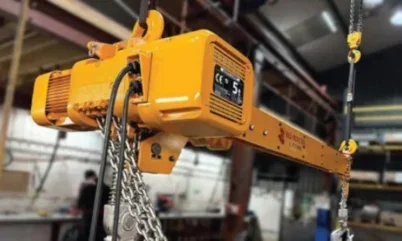
We live in an age of power assistance. We do not expect to do anything by hand. For tasks that involve physical force or effort we expect there to be a machine to do it for us. This is true in the home – everyone who practices DIY has an electric drill and only a true aficionado has a hand-powered drill, though for most jobs they are just as efficient, just as easy and frequently quicker as well, since there is no need to arrange power cables and plug them in.
If that’s true in the home, it is even more so in a factory or work environment. No employer would expect their staff to lift loads repeatedly by hand as a powered hoist would be provided. For very many applications it would be an electric chain-hoist on an overhead track. Would the fully-occupied employee in a modern setting really be expected to use a manually-powered chain hoist, to pull on the chain or on the lever himself to raise a heavy load through their own muscle-power when electric power is almost universally available?
Actually, yes. There are applications – even in heavy industry – where the manuallypowered chain hoist has advantages.
One is that they are reliable. The basic design has most likely been used since Roman times, which gives them more than simply nostalgic charm – it means that the design is clearly fit for purpose. Manual chain hoists are portable. They can be lightweight, in which case they can be taken anywhere and used anywhere, whether there is a power supply or not. Therefore, maintenance crews in the field – linesmen working up poles on telephone wires, for example – find them useful. Mine workers underground can carry a small hoist with them to the furthest reaches of newly excavated tunnels. Stage crews setting up sound stages, in dedicated venues or in green fields at festivals, need to lift lights and speakers. And a manual hoist is often the quickest and simplest way to do all that.
For the employer, they are simpler than electric hoists and considerably cheaper, by a factor of ten or more. They have far fewer moving parts, so they require much less maintenance – and they hardly ever go wrong and last for a very long time indeed.
In an industrial setting, the manual hoist has another, perhaps surprising, advantage over the electric chain hoist – it is precise and accurate in positioning. A load can be set down in an almost-exact alignment, down to a few millimetres, to where it is wanted. The reason comes down to its simplicity – its operation is absolutely intuitive. If the operator wants to lower the load by a fraction, he lowers the hand holding the chain by a fraction and ingrained hand-to-eye coordination sorts out the rest. Compare that with an electric chain host, which is typically controlled by buttons on a pendant. To lower it by a small amount, the operator has to push the button, hold it for just the right time and then release it. There will inevitably be a time lag while the motors start up and stop, it is a dynamic – not a static – system, and to obtain the very finest degree of control takes practice and is sometimes impossible even then.
Another situation in which hand-operated hoists may score – or even be a regulatory necessity – is in hazardous environments where electrical power poses unacceptable risks of fire or explosion. Examples are grain silos (where fine dust-particles are particularly flammable) and chemical plants. Having said that, of course many electrically-drive hoists are available in ATEX-compliant versions.
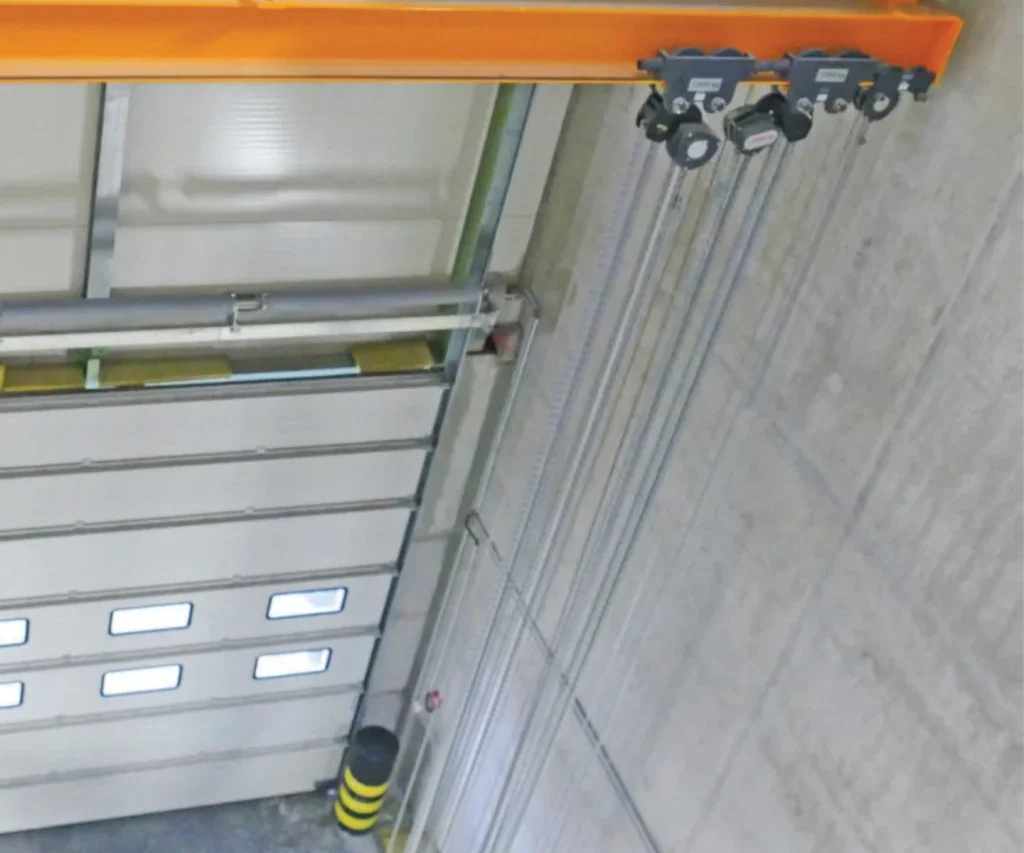
So manual chain hoists are holding their own in the workplace, which is not to say that electric chain-hoists are redundant. For repetitive lifts, or where a permanent installation is required, it would be absurd not to install them. For heavy loads also, one cannot expect an operator to lift by hand (although, on occasion, manual hoist with capacities of even 50t can be useful and are indeed used).
For an illustration of related applications, where manual and an electric hoist each have an advantage, see the box opposite. The same supplier, Red Rooster Lifting, of Oldmeldrum, Scotland, supplied Kito manual hoists to a boatyard and Kito electric chain hoists to a hydro station – each of them were obviously the optimal solution.
Lifting on land
Manual hoists come in two basic designs – the chain-pull (also known as the chain block) and the rachet-lever pull, and each have their own advantages. The leverrachets tend to have smaller capacities. Konecranes, for example, make chain block hoists with a load range of a quarter-tonne to 20t. Their KL manual lever puller goes up to a maximum of 3t.
But it has its advantages. It’s lightweight and compact, and, therefore, easily portable. Konecranes suggest applications for construction, maintenance and service work. Their KM2 hand chain block and manual trolley, on the other hand, which manages up to 20,000kg, is not intended to be portable. It comes hook-suspended or together with an I-beam trolley. When suspended from an I-beam it can be manually pushed along the beam if it is carrying up to 10t, or moved by a hand-geared chain for loads up to 20t. Both versions allow for low-headroom situations.
Coming from the same stable there are of course design similarities. Both types have dual pawl Weston-style brakes with two friction discs for four braking surfaces, and both are enclosed for protection against dirt. The KL lever rachet handle has a rubber grip and can be rotated 360° for use where space is restricted, and both have an open chain path for simple inspection and cleaning. The KM2 hand chain block, unusually for any manual hoist of either design, includes an overload limiter.
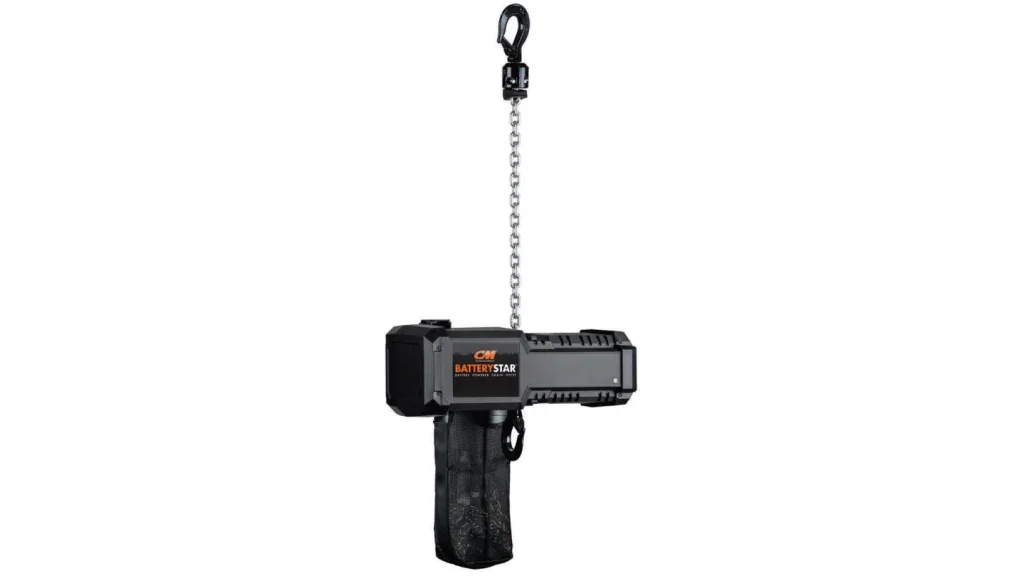
Konecranes also make electric chain hoists. Their new D-series comes in versions with safe working loads from 80kg to 5,000kg. Their SLX hoist with stepless hoisting speeds to give smooth vertical movement can lift up to 2,500kg. They can be fitted to an overhead track or beam, to a workstation or to a jib.
French manufacturer Verlinde make both manual and electric chain hoists. The manual hoists come in sizes and lifting capacities from 0.5 to 20t, and electric hoists range from 0.125t to over 50t. Their Eurochain VR electric range comes in capacities from 800kg to 10t. The VXS single-speed electric chain hoist is for loads from 125 to 2,000kg, and the VX Vario version has stepless variable lifting speeds from 125 to 2,500kg.
Not everything fits neatly into a category. Columbus McKinnon have an offering from their Yale brand that is electric powered, so it is by definition an electric chain hoist but it is not powered from the mains. The Yale BatteryStar runs off an M18 Red Lithium Battery from Milwaukee Tool, of the type that is also widely used for domestic power tools (we mentioned DIY tools at the start). The battery is rechargeable and can be inserted or removed from the hoist for recharging as required. The BatteryStar would seem to offer many of the advantages of both a manual and an electric chain hoist. The intention, as with a manual hoist, is for portability and ease of installation. Once you have attached it to an anchor point, you slide in the battery and switch on. It has a capacity of 1t, a lift height of 6m and a lift speed of 2.4m/min. It can also be run inverted – that is, with the hook attached to the support and the load attached to the body of the winch. One reason for doing so would be to give easier access to the control switch, which would be within reach rather that up at height.
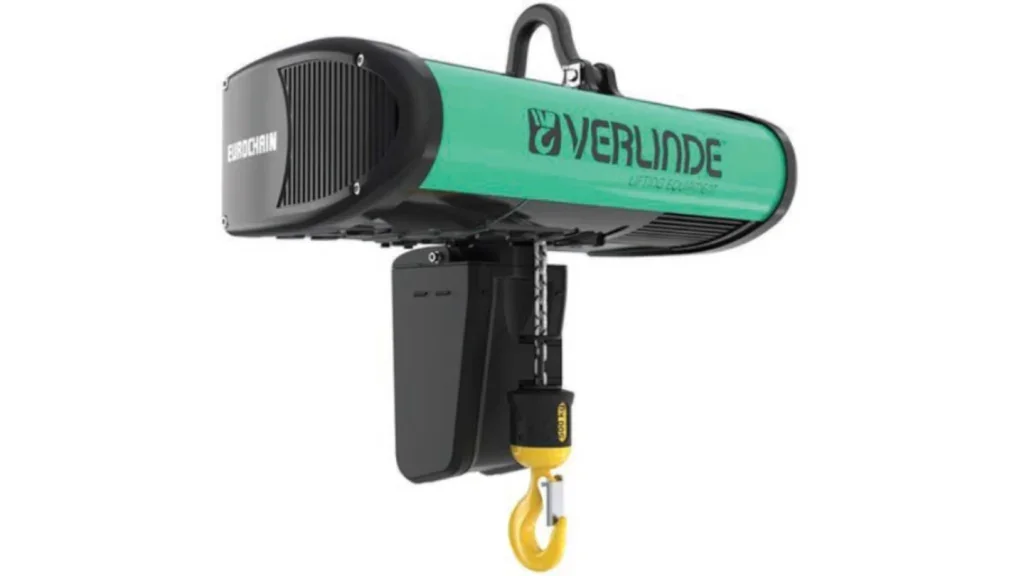
Lifting at sea
Another scenario where manual hoists have an advantage is in maritime and offshore applications. Secure power supplies may be lacking, and transferring parts or equipment for repairs and maintenance from ships to rigs – and nowadays to windfarms – may well call for medium or even large-capacity hoists, temporarily attached to beams or other lifting points but distant from any easily attached power supply. William Hackett of Alnwick in Northumberland are specialists in manual hoists, both chain-block and lever, and are specialists also in maritime applications.
Capacities range from 500kg to a massive 50t. Their William Hackett C4 manual Chain Hoist is designed, manufactured and proof load tested in the UK. It is a heavy duty hoist and is, therefore, strongly constructed. It comes in capacities from 500kg to 5t, and has created the foundations for other developed models such as the C4 QP and SS C4 QP.
The ‘SS’ series refers to subsea applications – these hoists are capable of withstanding multiple immersions in seawater and are DNVcertified for this. The ‘QP’ suffix stands for ‘Quad pawl’ and refers to William Hackett’s patented system for safely holding loads. It was originally devised for rachet lever hoists, but is now available on all William Hackett manual chain hoists as well.
The principle, as explained by William Hackett, is this: early lever hoists used a rachet and pawl system to hold the load-wheel and stop it reversing between pulls on the lever. The pawl was spring-loaded to keep it in contact with the rachet wheel. Failure of the pawl to engage – for example, if the spring were to fracture – would obviously have potentially disastrous results, with the weight of the load causing the rachet wheel to spin rapidly backwards out of control. Such single-point catastrophic failure are, of course, to be avoided, especially in the hazardous marine environment. Twin pawls, mounted diametrically opposite each other on the ratchet wheel, reduce this risk and are now standard in lever hoists. Even so, risk from a spring failure remains.
William Hackett have overcome this problem with a four-pawl design that does not rely on springs. Instead, the pawls are arranged in semi-interlocking pairs and each pair operates rather like a clock escapement – when one of the pawls disengages, it pushes against the other pawl to make it engage with the rachet. The system is fitted with springs, as a redundancy and a back-up, but they are not necessary for its operation and a snapped spring does not result in the system failing.
The company makes manual hoists of up to 50t capacity. This, of course, is a huge weight for a human operator to lift, but it can be done – as elementary school physics courses in mechanical advantage show, a sheave-andpulley system where the load is supported by two falls of rope requires only half the force to lift it when compared to a load on one fall, therefore a 5t pull will raise a 10t load. “There are 20 falls of chain in our 50t manual chain hoist, meaning there are 10 sheaves that the load chain get pulled around. This mechanical advantage essentially suggests that it should take the same effort to operate a 50t hoist as it does a 5t hoist,” says Josh Burgess, operations director of William Hackett. In practice, friction and other effects come into play. The effort required to operate a 50t hoist is actually around 500N, which is about 50kg force. But it can be done – though ideally with two strong men at the chain rather than one.
There is a downside – the greater the mechanical advantage, the slower the speed. That 50t load will be raised very slowly indeed. And lifting or lowering the unloaded hook will be similarly slow and tedious, which is why they have their Dual Speed chain hoist. When the hoist is loaded, the lifting and lowering speed will be the same as a regular chain hoist. But when the hoist is unloaded, an automatic speed transmission senses that fact and enables the hoist to travel five times faster than normal when not under load. It is available for capacities from 3.2t up to 50t.
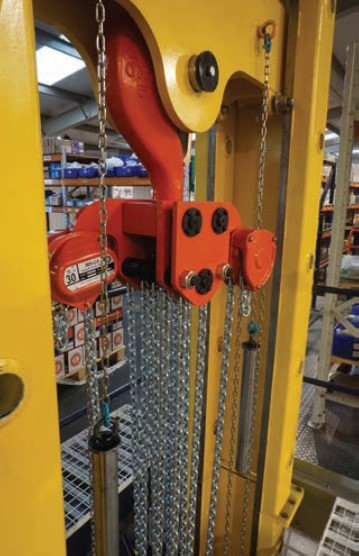
Tiger Lifting make manual hoists for maritime and offshore, and also for the entertainment industry – another application where portability and ease of installation on temporary structures (such as sound stages at festivals) are required – and where again power supplies are not necessarily available. Loads are usually not excessive. For scenery, sound and lighting equipment, in such scenarios a powered hoist would generally be overkill – heavy and inconvenient to put into place and requiring trailing power cables presenting safety hazards. For entertainment applications, Tiger make their products available in a matt black finish to prevent unwanted reflections from lighting rigs reaching the auditorium and detracting from the spectacle.
Chain blocks, lever hoists and combination block and trolley units are available, and the units are light in weight to make life easier for the assembly crews.
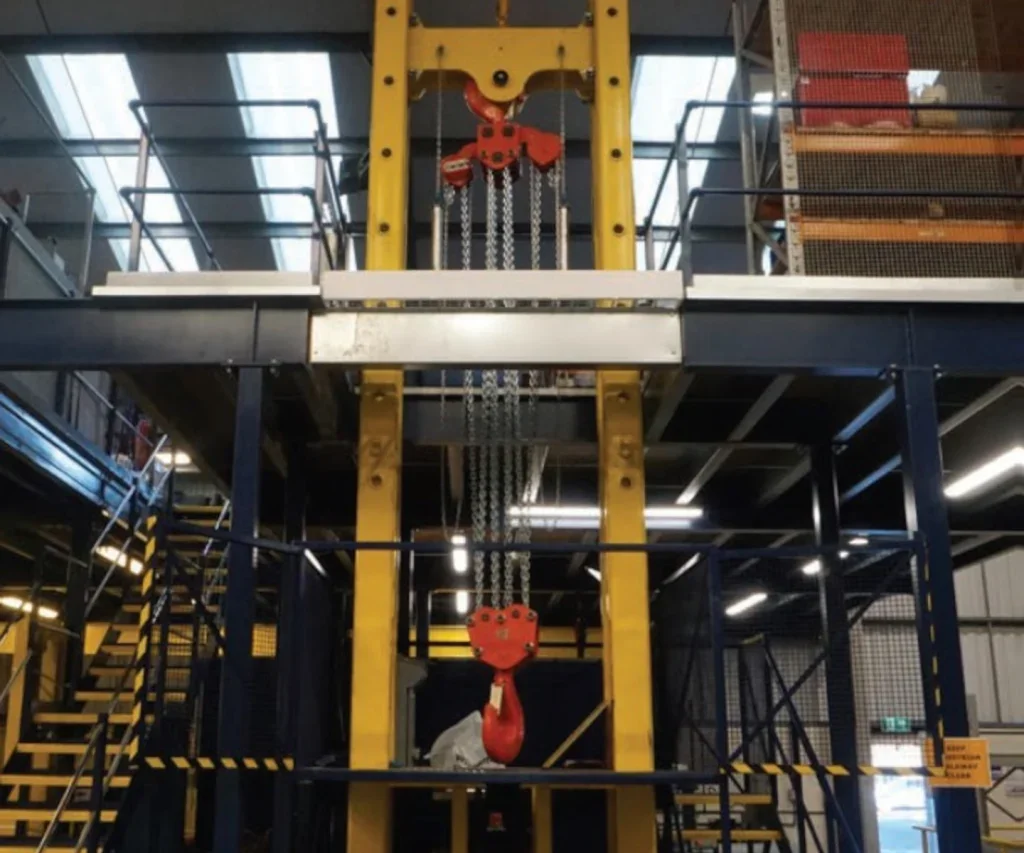
For hazardous or potentially explosive atmospheres, Tiger have ATEX-compliant Category II spark resistant chain-blocks and lever hoists. The chain-blocks have stainless steel hand chains and a special corrosionprotected body; the brake chamber is protected from contamination and encloses marine-specification friction discs. Suspension and load hooks, load chain guides, grip rings and hand wheels are all copper plated as a further preventative measure against sparks. The chain is also available as an option in stainless steel (though note that in any capacity over one-tonne, deration – such as lessened safe loading weights – will apply).
These are based on Tiger SS19 or SS20 units – SS standing for sub-sea, in which application for manual hoists Tiger also specialise.
From all of that, we may deduce that the manual chain hoist has not yet had its day. Its electric-powered brother may offer power on demand, but by comparison is heavy, complex, expensive and suitable for permanent installations only. For portability and convenience, and light loads at least, the human arm still has the upper hand.
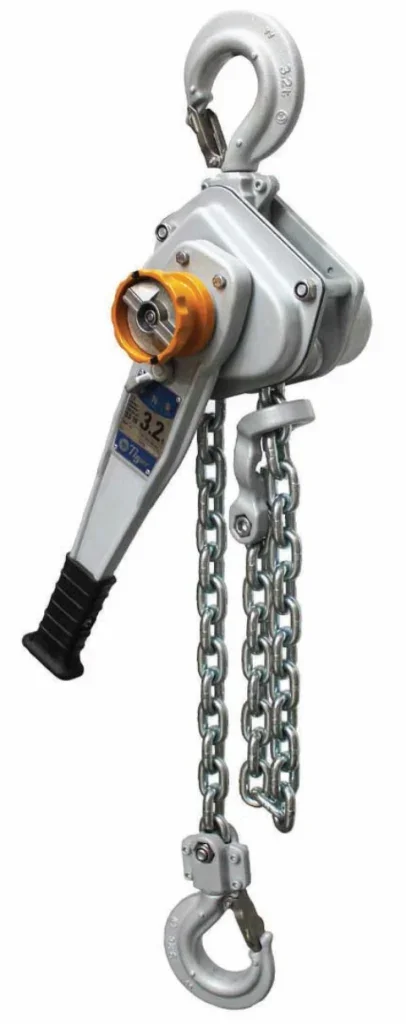
RED ROOSTER DELIVERS MANUAL AND ELECTRIC SOLUTIONS
Project 1: Boatyard project – manual chain hoists
A busy UK boatyard required reliable, high-capacity manual hoisting equipment to support the maintenance and repair of vessels hauled from the water via their existing slipway systems. These systems – two custom-built boat hoists rated at 40t and 10t respectively – have been in continuous operation for over 20 years, launching and recovering vessels up to 40t and 18m in length. To continue supporting these operations, the customer needed durable, corrosion-resistant manual lifting gear that could handle substantial loads in the harsh marine environment.
Red Rooster Lifting supplied a set of Kito high-performance manual hoists to enhance the existing infrastructure. For the heavy-duty lifts they supplied four 15t Kito Manual chain-block hoists.
These robustly constructed units have high-performance braking systems – nickel-plated chains give increased corrosion resistance in the marine environment.
For lighter lifts, four 3.2t Kito lever hoists were supplied. Lightweight and portable, these gave precise load control for adjusting and securing components during repair work or boat maintenance – especially useful during tight manoeuvring tasks on slippery or confined platforms.
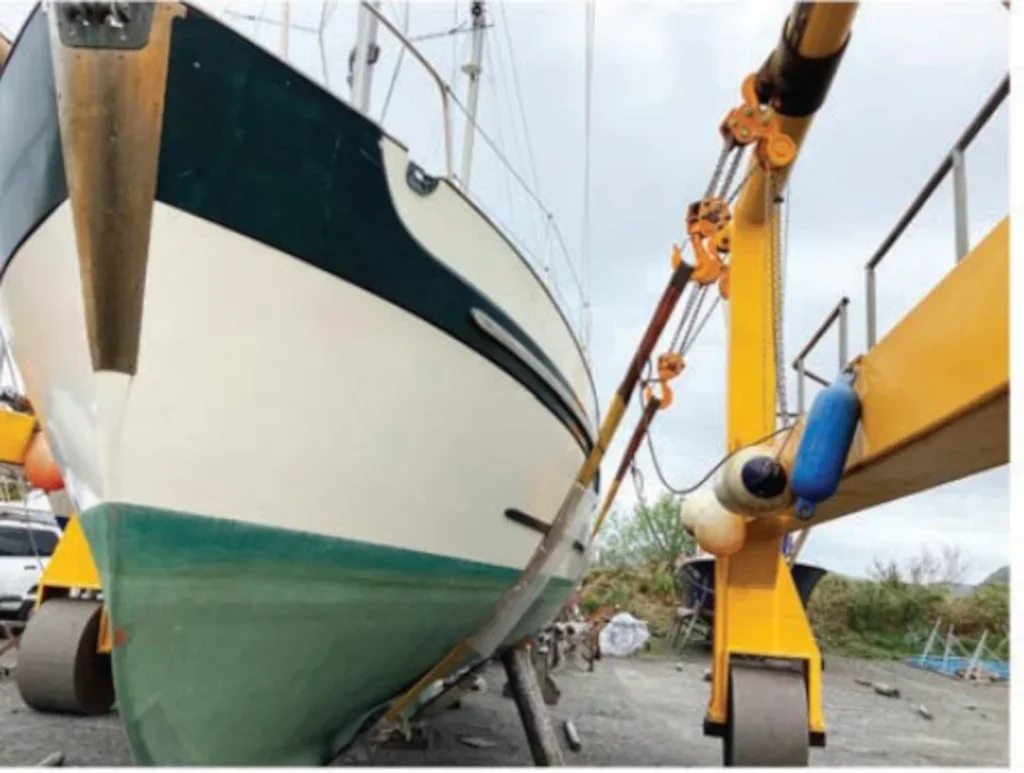
Project 2: Hydropower – synchronised electric lifting
A leading hydropower station operator contacted Red Rooster for a twin hook lifting solution for replacing two sluice gates. The gates regulate water levels and flow rates and required equipment with precise lifting and lowering capabilities, as well as reliable performance in a challenging aquatic environment.
Red Rooster supplied two 5t Kito, model TWER2-050-IS electric twinhook chain hoists. The design team incorporated custom features to handle the complexities of the project. Features of the hoists included synchronised lifting. Each hoist is equipped with an inverter for lifting and lowering of the twin hooks in phase. This not only gives accurate positioning of the sluice gate but also prevents load imbalance or damage during installation and removal.
Nickel-plated load chains and stainless-steel bottom blocks were provided for robust performance in the water-exposed conditions, and surfaces were epoxy-painted surfaces for protection against corrosion.
For enhanced safety, thermal protectors were fitted to safeguard the hoists against overheating during prolonged operations. Upper and lower limit switches prevent over-travel, minimising the risk of equipment damage. The twin hook hoists have dual-speed lifting to precisely control the sluice gates; a counter hour meter tracks equipment use, allowing proactive maintenance planning, reducing the risk of unexpected breakdowns and extending the lifespan of the hoists.
The span width between hooks is 3,048mm and the height of lift is 10m.



